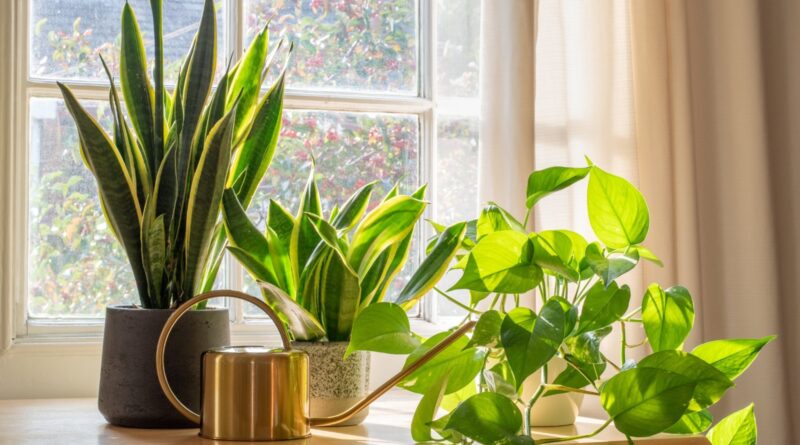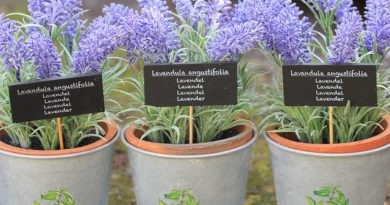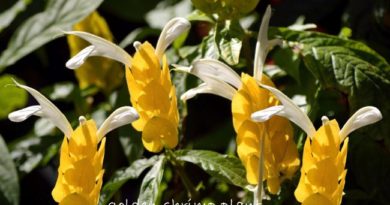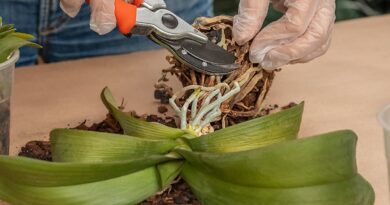A Comprehensive Guide to Lighting For Houseplants
Light for indoor plants is one of the most important factors in healthy growth. But how much light do they need? How can you make sure you’re providing the right lighting conditions?
To get plants that will work well (and look good) in your home, they need as much of their natural habitat as possible reflected in the position you choose for them. Let’s dig into different houseplant lighting needs and how to provide them in this comprehensive houseplant lighting guide.
Why is Sunlight Important for Plants?

Plants, in nearly all cases, cannot survive without sunlight. They take in sunlight and convert it to energy through photosynthesis. This process takes place in chloroplast cells. What is interesting and unique about plants is that the levels of chloroplasts in each one are different. The higher the levels of chloroplasts in a plant, the higher levels of light they can absorb.
But as we all know, nature is infinitely resourceful. Plants can change the amount of chloroplasts they produce based on the light available. This is easy to see when plants are put through the hardening process and given doses of sunlight in more frequent bursts over time. You can use your houseplant’s ability to adapt to help them adjust to your environment.
Measuring Light

The illuminance or brightness of light the human eye can see can be measured in units called lumens and lux. Lumens are a measurement of illumination using visible light by a source per unit of time, and lux is the same but uses area as the unit of measurement. One lux is equal to one lumen per square meter (3.2 feet).
As a more practical idea, a stand 100W light bulb will give you about 1600 lumens. The lux level will depend on the amount of area the light will cover, but in general, the recommended room level of lux would be around 150 lux.
For growing plants, this is not enough. 1000 – 2000 lux is around the ‘bright, indirect sunlight’ most indoor plants require, and positioning will be vitally important to ensure the plants get enough light.
Use Technology

Using a light meter is one of the easiest ways to measure if your plants are getting enough light. Photographers often use them to measure the amount of light that will come into a lens, and they will be pretty accurate.
The problem is that there is no list of plants that will be able to say with certainty that a watermelon peperomia needs 1000 lux of light intensity to perform at its best. And with its previously discussed ability to change its chloroplasts, it’s not a practical application of a researcher’s time to produce a list.
What we do have, however, is a bunch of apps that you can download (some for free) that will give you a general indication of the light in your home, and most have a handy ‘not enough’ light notification. Make use of these, even if it’s just for fun.
Understanding Light Indoors

Growing plants outdoors is not the same as growing plants indoors. That may seem obvious, but it’s important to understand that windows can magnify or diffuse light, affecting its intensity. Move plants just a few feet from a light source (the window), and you will reduce the intensity dramatically.
In the daylight hours, outdoor light (not in full sun) achieves around 10,000 – 25,000 lux. This is rarely achievable indoors unless you have invested extensively in artificial grow lights.
Most indoor plants we buy have been grown in a greenhouse with light that is artificially adjusted for maximum growth of the plants by the grower. Once it comes into your home, it may not get exactly what the grower gave it. Sunlight that comes through a window can also be very damaging to plants and can scorch the leaves by creating a magnifying effect with the glass.
Window Aspect

Whether a window in your home faces North, South, West, or East has a big impact on the light intensity in your home as the sun moves in and out of orbit during the day. This list is a general list for windows in the Northern Hemisphere:
- North facing – the side with the least amount of light coming in and only suitable for shade-loving plants. In summer, this would be fine, but in winter, you need to move plants indoors or supplement them with grow lights.
- South facing – the opposite of north facing, with the most light in summer and enough light in winter. These windows are best for sun-loving plants like trees. Filter with curtains or blinds for the host of plants that need bright, indirect light.
- West facing – in summer, this side of the house will get good afternoon sun, and it would be good for sun-loving plants, although not as strong in intensity as the south-facing windows.
- East facing – this side will get mostly morning sun, and plants that require moderate sunlight will like this position best.
General Lighting Categories for Houseplants
You will often see in the care instructions for a plant you buy an indication of its lighting requirements, which generally fall into the following categories:
Direct Light

These are plants that prefer direct sunlight through a window, like trees, cacti, succulents, and kitchen herbs. These plants will grow outdoors in full sun or indoors as houseplants. Generally, they prefer at least six hours of direct sunlight a day and plenty of light the rest of the day.
My top ten plants for direct light:
- Jade plant (Crassula ovata) – fleshy leaves and tree-like stems keep this plant hydrated, and it loves hot, sunny conditions.
- Sansevieria or snake plant – tough as nails with long fleshy stems and interesting coloring.
- String of dolphins (Curio peregrinus) – my favorite of the string plants that all have unique features and are known for loving a sunny position to give their best showing.
- Eucalyptus – any of the trees grown indoors will need a good deal of sunlight, and it adds such a lovely fragrance to a room.
- Fiddle leaf fig (Ficus lyrata) – loved for its giant leaves, this plant will need plenty of light to grow. Outdoors, they are expansive and love full sun.
- Pelargoniums – remind me of bursts of color against a pure white wall in some village in the hot Mediterranean. Great for indoor color as long as it gets enough sunlight.
- Money tree (Pachira aquatica) – a swamp tree that makes such a unique houseplant. Good for vertical height in a room for design purposes.
- Areca palm (Dypsis lutescens) – soft and flowing palm that can tolerate some mediocre light but will thrive in direct light.
- Lemon trees – the ultimate treat is to grow a lemon as a houseplant, enjoy the scent, and pick lemons for the kitchen. They will need plenty of direct sunlight to flower and fruit.
- Basil – loved by many, but in desperate need of direct sunlight if it’s to grow well indoors. Perfect for a south-facing, sunny kitchen windowsill.
Bright Indirect Light

The most used phrase when it comes to houseplants. This group covers a lot of plants, including climbers, small trees, and large- and small-leaved tropical plants. They originate from under the canopy of tropical rainforests. They are used to dappled shade but prefer to be out of direct sunlight.
The best position for these plants is close to a window. You can also diffuse the light with a sheer curtain or filter or choose a shaded window.
My top ten plants for bright indirect light:
- Philodendrons – just so many to choose from, and with the most interesting foliage and forms as to make them collector’s plants.
- Rubber plant – in all its forms, these statement ficus plants are tough and hardy.
- Dragon tree (Dracaena marginata) – a very pretty spiky plant that has a different form from many other houseplants, which makes it a good combo plant for interest.
- English Ivy (Hedera helix) – a climbing vine that can be used on high shelves to cascade down with leafy color.
- Happy Bean (Peperomia ferreyrae) – just the name is enough for me, but it does have good characteristics and very green-bean-looking succulent leaves.
- Boston fern (Nephrolepis exaltata) – a large flowing fern that has a special place hanging on patios and in homes of many homes.
- Peace lily – very forgiving Spathiphyllum sp with lovely green leaves and white sail flowers. The new varieties like ‘Sensation’ have huge leaves and are very special for an area with enough space to show them off.
- Pilea glauca – delightful little trailing plants dubbed silver sparkle because of its silvery-green leaves.
- Yucca – I think there is a place for yuccas in any home. The spiky leaves are showy, and the plants are super tough.
- Zebra plant (Haworthiopsis fasciata) – a succulent on another level that’s able to withstand a little less light than other succulents. Very pretty stripy leaves.
Medium Light

The groups of plants that will thrive in medium indirect light can include those that have grown on the floor of a tropical forest protected from sunlight in the very filtered shade provided by trees, shrubs, and vines above them. These plants can be placed a little further away from windows but not as far as the dark corners of low-light areas.
My top ten plants for medium indirect light:
- Japanese painted fern (Athyrium niponicum) – just one of the ferns that belong in this category. This silvery-leaved one with purple bits is very different from the bright or dark green fern varieties.
- African violet – the toughest flowering indoor plant on my list. I once kept one alive with very little care for 20 years, until one day I decided to repot it – it died within a week.
- Anthuriums – a little old-fashioned, but some new colors are very special. They make good houseplants if you want a bit of long-lasting color.
- Hoyas – beautiful trailing plants with velvety star-shaped flowers that are formed in balls. It’s an exciting time when they flower, but the rest of the time, they look after themselves.
- Orchids – a definite favorite and often used as a replacement for fresh-cut flowers. They flower for months at a time and can be made to flower again with the right care.
- Pitcher plants – fascinating plants that are surprisingly easy to grow, looking at their exotic nature.
- Monstera – giant leaves like Swiss cheese. What’s not to like?
- Alocasia – there are so many beautiful ones in this group of plants that it’s too difficult to choose.
- Polka dot begonia (Begonia maculata) – the dotty leaves are why you want this plant. It is so unusual.
- Rhapis palm (Rhapis excelsa) – a lovely palm that grows well.
Low Light

A very tricky area to populate, as anyone with a dark bathroom can attest to. This category is for areas with small or north-facing windows and areas further back in rooms that are not as bright. Most of these plants will prefer brighter conditions but will tolerate low light. They may need less water or grow slower than normal, but they will survive.
My top ten plants for low light:
- Baby Rubber Plant (Peperomia obtusifolia) – cute as pie little tropical plants that will cope with low light.
- Pothos – a good selection of pothos will deal well under these conditions and even thrive. They are super for trailing.
- Spider plant (Chlorophytum comosum) – variegated leaves and curly, spidery leaves are the joys of having these plants indoors.
- Aspidistra – also known as the cast iron plant because it is one of the toughest houseplants around, and it has lovely dark green leaves.
- ZZ plant (Zamioculcas zamiifolia) – there is plenty to like about this plant, and it is not only its look but the fact that a bit of neglect goes a long way. Don’t be overly fussy with it, and it will grow beautifully.
- Bird’s nest fern (Asplenium nidus) – a pretty fern-like a bird’s nest with lime green leaves and a wonderful growing habit.
- Maidenhair fern (Adiantum raddianum) – the most delicate of ferns to look at and yet quite hardy.
- Tillandsia or air plants will do very well in low-light areas, especially bathrooms, because they like the humidity and will get their daily spritz from the air.
- Calatheas – with their pretty variegated leaves, these are brilliant for low-light areas.
- Philodendron scandens – I’m not sure once you have this plant whether it can ever be killed off – maybe with kindness?
How to Tell if Your Plant is Getting Enough Light
Healthy plants that look good and grow well are getting enough light. If your plant is not getting enough light, it often stretches and gets leggy, leaning towards the light. With those getting too much light, you may see the leaves will have burn marks where they have been scorched by the sun, or the leaves start yellowing. It is simply a matter of trying the plant in a different position with more adequate lighting.
Top Up with Artificial Light

If you are serious about your houseplants, it may be necessary to get artificial light to help your plants get enough of what they need. There are various types of lighting specifically manufactured for plants, whether it’s for houseplants, kitchen herbs, or sowing seeds indoors when it’s frosty outside. The standard lighting in a house is not going to do the job. Here are some things to think about before adding extra lighting to your space.
Choose lights that are as close to sunlight as manufacturers can make them. These will be called ‘full spectrum’ or ‘broad spectrum’ LED or fluorescent lights, and they are sold specifically for plants and growing plants.
Full spectrum lights have a balance of blue and red light. Blue is a cool light that promotes green leafy foliage, but it also keeps stems short. Red light is warm and promotes vegetative growth, better flowers, and taller stems. It stands to reason that a balance of these colors will give your plants the best.
While not getting too bogged down in measurements, Kelvin, the unit used to measure thermodynamic temperature, is used in lighting to measure the color temperature of a light bulb. The light bulbs closest to daylight needed for plants should have a Kevin rating of 5000-6500K.
If you have extra grow lights in your home, position them so they are at the best height for the plants. Too close, and they may scorch the leaves, and too far away, and they may not work. Some manufacturers will state the optimal height for their specific lighting brand.
Final Thoughts
Getting enough light into a home so that houseplants will have a chance to grow well can be a challenge, but it’s more of a trial-and-error experiment. There is no harm in moving plants around so they get what they need.
I have a holiday apartment filled with houseplants, and when they look sad, I bring them into my office, where there is plenty of light, and give them some much-needed TLC before rotating them back into the apartments. Some plants just work where you put them, and others struggle, so there is much that can be learned from just observing our precious plants.




